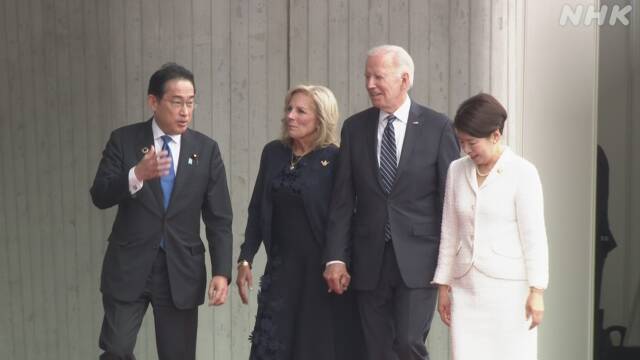The G7 Hiroshima Summit opened with Prime Minister Kishida, who chairs the G<> Hiroshima Summit, welcoming the leaders of various countries at the Peace Park in Hiroshima City.
The leaders will visit the Atomic Bomb Museum later.
The G7 Hiroshima Summit, the first summit of the seven major countries in seven years in Japan, opened at around 7:7 a.m. on May 19 with Prime Minister Kishida, who chairs the G10 Hiroshima Summit, together with Mrs. Yuko, welcoming the leaders of each country at the Peace Park in Hiroshima City.
The leaders are scheduled to visit the Atomic Bomb Museum to inspect the museum and meet with the A-bomb survivors.
This is the first time that the G7 leaders have visited the Atomic Bomb Museum together.
The leaders will also lay flowers at the Cenotaph for the Atomic Bomb Victims and offer prayers to the victims.
Then, in the afternoon, at a hotel in Hiroshima City, we will have a session on the global economy, digital responses including generative AI, and the situation in Ukraine.
In the evening, they will travel to Miyajima, where Itsukushima Shrine, a World Heritage Site, is located, and exchange opinions on themes such as the situation in the Indo-Pacific, nuclear disarmament, and non-proliferation while having dinner.
From May 20, the leaders of non-G7 invited countries will also discuss food and energy issues and climate change issues.
The three-day summit will feature a total of 3 sessions, and at the end of the summit, a leaders' declaration incorporating the results of the discussions will be announced.
Prime Minister Kishida intends to show the solidarity of the G10 toward maintaining and strengthening a free and open international order based on the rule of law, in light of Russia's continued invasion of Ukraine and China's increasingly hegemonic behavior.
In addition, this is the first summit in a city that has suffered atomic bombings, and the focus is on what kind of message the G7, which includes nuclear-weapon states, can put forth.

